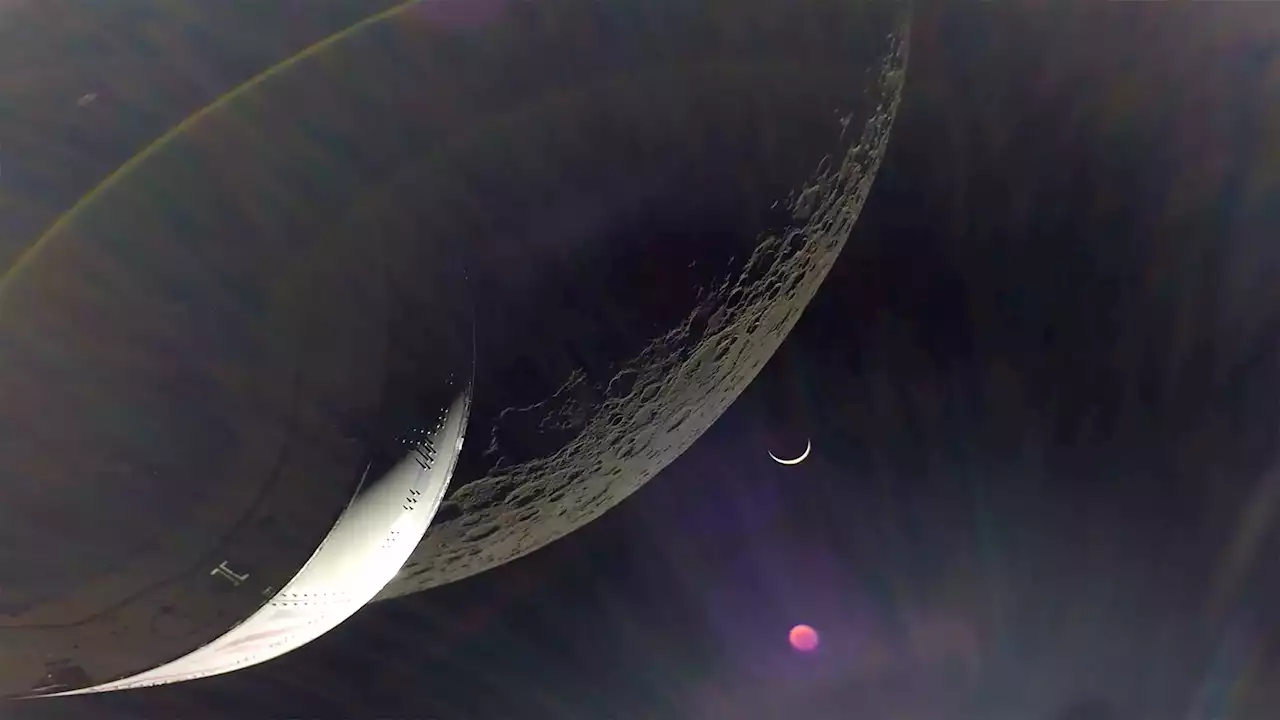NASA will attempt to return part of the Orion spacecraft to Earth on Sunday, a maneuver that will expose the vehicle to heat approaching 5,000 degrees after a nearly monthlong journey
is set to conclude this weekend when the agency attempts to return part of the Orion spacecraft to Earth, a maneuver that will expose the vehicle to intense heat after a nearly monthlong journey.
The crew module on the agency’s Orion spacecraft is expected to land under parachutes in the Pacific Ocean off the coast of Baja California in Mexico around 12:40 p.m. ET on Sunday, according to the National Aeronautics and Space Administration.
United States Latest News, United States Headlines
Similar News:You can also read news stories similar to this one that we have collected from other news sources.
 NASA Artemis I – Flight Day 22: Orion Spacecraft Continues Its Journey Back to Earthhttps://youtu.be/MzimIloHRs4 On flight day 20, Orion captured the crescent Earth in the distance as the spacecraft regained communications with the Deep Space Network following its return powered flyby on the far side of the Moon. The spacecraft will splash down on Sunday, December 11. Credit: NASA
NASA Artemis I – Flight Day 22: Orion Spacecraft Continues Its Journey Back to Earthhttps://youtu.be/MzimIloHRs4 On flight day 20, Orion captured the crescent Earth in the distance as the spacecraft regained communications with the Deep Space Network following its return powered flyby on the far side of the Moon. The spacecraft will splash down on Sunday, December 11. Credit: NASA
Read more »
 Watch the moon eclipse Earth in stunning video from Artemis 1's Orion spacecraftOrion captured the amazing footage on Nov. 28, 2022.
Watch the moon eclipse Earth in stunning video from Artemis 1's Orion spacecraftOrion captured the amazing footage on Nov. 28, 2022.
Read more »
 NASA's Artemis 1 Orion spacecraft set for return to Earth on Dec. 11The capsule will splash down off the coast of Baja California around 12:40 p.m. ET on Sunday (Dec. 11).
NASA's Artemis 1 Orion spacecraft set for return to Earth on Dec. 11The capsule will splash down off the coast of Baja California around 12:40 p.m. ET on Sunday (Dec. 11).
Read more »
 NASA’s Orion spacecraft prepares for blazing return to EarthAfter a final buzz by the Moon, the Artemis I mission faces its biggest challenge: coming home.
NASA’s Orion spacecraft prepares for blazing return to EarthAfter a final buzz by the Moon, the Artemis I mission faces its biggest challenge: coming home.
Read more »
![]() How to Watch NASA's Orion Spacecraft Arrive Back on Earth This WeekendNASA's historic Orion spacecraft will splash down into the ocean off the coast of California on Sunday. Here's how to watch!
How to Watch NASA's Orion Spacecraft Arrive Back on Earth This WeekendNASA's historic Orion spacecraft will splash down into the ocean off the coast of California on Sunday. Here's how to watch!
Read more »
 NASA releases stunning hi-res moon images from Orion flyby | Digital TrendsNASA has released some astonishingly detailed images captured by the Orion spacecraft as it passed within 79 miles of the lunar surface earlier this week.
NASA releases stunning hi-res moon images from Orion flyby | Digital TrendsNASA has released some astonishingly detailed images captured by the Orion spacecraft as it passed within 79 miles of the lunar surface earlier this week.
Read more »
